Table of Contents
Anarchism
 Anarchism is a political philosophy that advocates self-governed societies based on voluntary, cooperative stateless societies, rejecting hierarchies they view as unjust. Anarchism holds capitalism, the state, and representative democracy to be undesirable, unnecessary and harmful. Anarchism specifically entails opposing authority or hierarchical organisation in the conduct of all human relations. Anarchism does not offer a fixed body of doctrine from a single particular world view. Many types and traditions of anarchism exist, ranging from collectivism to individualism, not all of which are mutually exclusive.
Anarchism is a political philosophy that advocates self-governed societies based on voluntary, cooperative stateless societies, rejecting hierarchies they view as unjust. Anarchism holds capitalism, the state, and representative democracy to be undesirable, unnecessary and harmful. Anarchism specifically entails opposing authority or hierarchical organisation in the conduct of all human relations. Anarchism does not offer a fixed body of doctrine from a single particular world view. Many types and traditions of anarchism exist, ranging from collectivism to individualism, not all of which are mutually exclusive.
Works
- An Anarchist Programme - Errico Malatesta (Audiobook)
- To Change Everything, an anarchist appeal - CrimethInc Ex-Workers Collective
- Anarchy Works - Peter Gelderloos
- We House, You are Housed, They are Homeless - Colin Ward
Libraries
Classical Schools of Thought
Anarchism has existed as a philosophy almost as long as philosophy itself. Classical Greek philosophy had Cynicism and Stoicism, Classical Chinese philosophy had Taoism. Anarchist philosophies were practised by early Abrahamic sects across the Mediterranean, and in Basra during the Islamic Golden age. But it wasn't until the emergence of Capitalism that the philosophy we know as 'Anarchism' was first formalised. There emerged three distinct schools of thought within this sphere; Individualist Anarchism, Mutualism and Social Anarchism (Which evolved from Collectivist Anarchism into Anarcho-Communism).
Anarcho-Communism
 Anarcho-Communism advocates the abolition of the state, capitalism, wage labour and private property in favor of common ownership of the means of production, direct democracy, cooperativism, equal distribution of valuables, and a horizontal network of workers' councils with production and consumption based on the guiding principle: “From each according to his ability, to each according to his needs”.
Anarcho-Communism advocates the abolition of the state, capitalism, wage labour and private property in favor of common ownership of the means of production, direct democracy, cooperativism, equal distribution of valuables, and a horizontal network of workers' councils with production and consumption based on the guiding principle: “From each according to his ability, to each according to his needs”.
- The Conquest of Bread - Peter Kropotkin (Audiobook)
- Fields, Factories and Workshops - Peter Kropotkin
- Mutual Aid: A Factor of Evolution - Peter Kropotkin (Audiobook)
- The Manifesto of Equals - Gracchus Babeuf (Audiobook)
- What is Communist Anarchism? - Alexander Berkman (Audiobook)
- The Right to be Greedy - For Ourselves
- Collected Works - Ricardo Flores Magón
- Land and Liberty - Ricardo Flores Magón
Mutualism
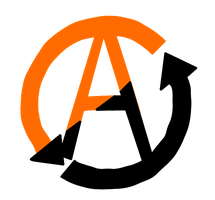 Mutualism is an economic theory that advocates a society with free markets and occupation and use, or usufruct property norms. Mutualism is based on a version of the labor theory of value holding that when labor or its product is sold, in exchange it ought to receive goods or services embodying “the amount of labor necessary to produce an article of exactly similar and equal utility”.
Mutualism is an economic theory that advocates a society with free markets and occupation and use, or usufruct property norms. Mutualism is based on a version of the labor theory of value holding that when labor or its product is sold, in exchange it ought to receive goods or services embodying “the amount of labor necessary to produce an article of exactly similar and equal utility”.
- What Is Property? - Pierre Joseph Proudhon (Audiobook)
- The Principle of Federation - Pierre Joseph Proudhon
- The Economics of Anarchy - Dyer Lum
- Studies In Mutualist Political Economy - Kevin Carson
- Organization Theory - Kevin Carson
- A Mutualist FAQ - Anonymous
Individualist Anarchism
 Individualist anarchism refers to several traditions of thought that emphasize the individual and his will over external determinants such as groups, society, traditions and ideological systems. Individualist anarchism is not a single philosophy, but it refers to a group of individualistic philosophies that hold “if the individual has the right to govern himself, all external government is tyranny”.
Individualist anarchism refers to several traditions of thought that emphasize the individual and his will over external determinants such as groups, society, traditions and ideological systems. Individualist anarchism is not a single philosophy, but it refers to a group of individualistic philosophies that hold “if the individual has the right to govern himself, all external government is tyranny”.
- Political Justice - William Godwin
- The Gay Science - Friedrich Nietzsche (Audiobook)
- Thus Spoke Zarathustra - Friedrich Nietzsche (Audiobook)
- Beyond Good and Evil - Friedrich Nietzsche (Audiobook)
- The Soul of Man Under Socialism - Oscar Wilde
- Towards the Creative Nothing - Renzo Novatore
- The Abolition of Work - Bob Black (Audiobook)
- Feral Revolution - Feral Faun
- Against the Logic of Submission - Wolfi Landstreicher (Audiobook)
- Equitable Commerce - Josiah Warren
- No Treason - Lysander Spooner
- Vices Are Not Crimes - Lysander Spooner (Audiobook)
- Individual Liberty - Benjamin Tucker
- Anarchist Individualism and Amorous Comradeship - Émile Armand
Post-Classical Schools of Thought
Anarcha-Feminism
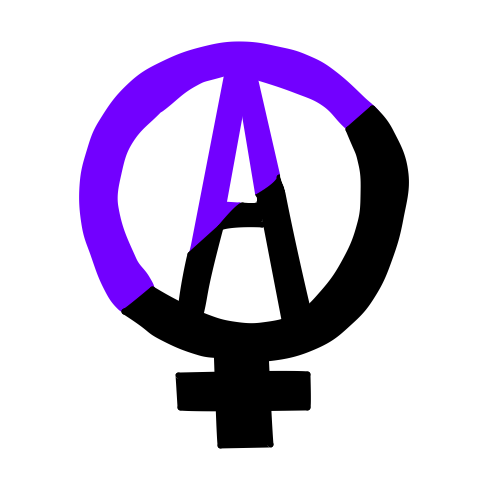 Anarcha-feminism generally views patriarchy and traditional gender roles as a manifestation of involuntary coercive hierarchy that should be replaced by decentralized free association. They believe that the struggle against patriarchy is an essential part of class conflict and the anarchist struggle against the state and capitalism, and vice versa.
Anarcha-feminism generally views patriarchy and traditional gender roles as a manifestation of involuntary coercive hierarchy that should be replaced by decentralized free association. They believe that the struggle against patriarchy is an essential part of class conflict and the anarchist struggle against the state and capitalism, and vice versa.
- Anarchism and Other Essays - Emma Goldman (Audiobook)
- Uncivil Liberty - Ezra Heywood
- The Tyranny of Tyranny - Cathy Levine
- Anarchism: The Feminist Connection - Peggy Kornegger
- Free Women of Spain - Martha A. Ackelsberg
- Quiet Rumours - Roxanne Dunbar-Ortiz
- The Dialectic of Sex - Shulamith Firestone
Anarcho-Pacifism
 Anarcho-pacifism rejects the use of violence in the struggle for social change, the abolition of capitalism and the state. Anarcho-pacifists criticize the separation of means and ends, they also tend to see the state as 'organised violence' and so they see that “it would therefore seem logical that anarchists should reject all violence”.
Anarcho-pacifism rejects the use of violence in the struggle for social change, the abolition of capitalism and the state. Anarcho-pacifists criticize the separation of means and ends, they also tend to see the state as 'organised violence' and so they see that “it would therefore seem logical that anarchists should reject all violence”.
- Civil Disobedience - Henry David Thoreau (Audiobook)
- The Masque of Anarchy - Percy Bysshe Shelley (Audiobook)
- The Power of Nonviolence - Richard B. Gregg
- Resisting the Nation State, the pacifist and anarchist tradition - Geoffrey Ostergaard
- How Nonviolence Protects the State - Peter Gelderloos (Audiobook)
Green Anarchism
 Green Anarchism is a school of thought within anarchism which puts a particular emphasis on environmental issues. A green anarchist theory is normally one that extends anarchist ideology beyond a critique of human interactions, includes a critique of the interactions between humans and non-humans as well, and argues that the hierarchical domination of nature by human stems from the hierarchical domination of human by human.
Green Anarchism is a school of thought within anarchism which puts a particular emphasis on environmental issues. A green anarchist theory is normally one that extends anarchist ideology beyond a critique of human interactions, includes a critique of the interactions between humans and non-humans as well, and argues that the hierarchical domination of nature by human stems from the hierarchical domination of human by human.
- Towards An Anarchist Ecology - Sprout Distro
- Post-Scarcity Anarchism - Murray Bookchin (Audiobook)
- Our Synthetic Environment - Murray Bookchin
- Animal Liberation and Social Revolution - Brian A. Dominick
- The Breakdown of Nations - Leopold Kohr
- Capitalism is Killing the Earth - John Warwick
Religious Anarchism
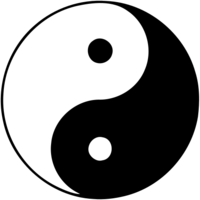 Religious anarchists view organised religion mostly as authoritarian and hierarchical that has strayed from its humble origins. The original messages to live a simple life, to share the wealth of the earth, to treat each other with love and respect, to tolerate others and to live in peace invariably gets lost as worldly institutions take over. Religious leaders accrue power to themselves, draw up dogmas, and wage war on all who dissent. They seek protection from temporal rulers, bestowing on them in return a supernatural legitimacy. As a result, in nearly all cases organised religions have lost the peaceful and tolerant message of their founders.
Religious anarchists view organised religion mostly as authoritarian and hierarchical that has strayed from its humble origins. The original messages to live a simple life, to share the wealth of the earth, to treat each other with love and respect, to tolerate others and to live in peace invariably gets lost as worldly institutions take over. Religious leaders accrue power to themselves, draw up dogmas, and wage war on all who dissent. They seek protection from temporal rulers, bestowing on them in return a supernatural legitimacy. As a result, in nearly all cases organised religions have lost the peaceful and tolerant message of their founders.
- Buddhist Anarchism - Gary Snyder
- Zenarchy - Kerry Thornley
- The Kingdom of God is Within You - Leo Tolstoy (Audiobook)
- Messianic Troublemakers - Jesse Cohn
- Building the Future Society - Baal HaSulam
- Anarca-Islam - Mohamed Jean Veneuse
- Varieties of Islamic Anarchism - Anthony T. Fiscella
- Tao Te Ching - Lao Tse (Audiobook)
- Anarchism and Taoism - Josh (Audiobook)
- Neither Lord Nor Subject - Bao Jingyan (Audiobook)
Contemporary Schools of Thought
Post-Left Anarchism
 Post-anarchism is an anarchist philosophy that employs post-structuralist and postmodernist approaches. Post-anarchism is not a single coherent theory, but rather refers to the combined works of any number of post-modernists, post-leftists and post-structuralists.
Post-anarchism is an anarchist philosophy that employs post-structuralist and postmodernist approaches. Post-anarchism is not a single coherent theory, but rather refers to the combined works of any number of post-modernists, post-leftists and post-structuralists.
- Anarchy After Leftism - Bob Black
- Anarchist Subjectivities and Modern Subjectivities - Daniel Colson
- Violent Accumulation - Simon Springer
- Anarchy, Power and Post-Structuralism - Allan Antliff
Post-Colonial Anarchism
![]() Post-colonial anarchism is a re-envisioning of anarchism in an explicitly anti-imperialist framework. Where traditional anarchism is a movement arising from the struggles of proletarians in industrialized western European nations - and thus sees history from their perspective - post-colonial anarchism approaches the same principles from the perspective of colonized peoples throughout the world.
Post-colonial anarchism is a re-envisioning of anarchism in an explicitly anti-imperialist framework. Where traditional anarchism is a movement arising from the struggles of proletarians in industrialized western European nations - and thus sees history from their perspective - post-colonial anarchism approaches the same principles from the perspective of colonized peoples throughout the world.
- Post-Colonial Anarchism - Roger White
- Better Off Stateless - Peter Leeson
- The Progressive Plantation: Racism inside white radical groups - Lorenzo Kom'boa Ervin
- Anarchism and the Black Revolution - Lorenzo Kom'boa Ervin
- Towards an Anarchist History of the Chinese Revolution - Andrew Flood
- Haiti: A History of Intervention, Occupation and Resistance - Andrew Flood
- With Land, Without the State - John Severino
- The Intensification of Independence in Wallmapi - John Severino
- The Origins of Contemporary Chicano Anarchism - Revolutionary Autonomous Communities
- 500 Years of Indigeneous Resistance - Anonymous
- Black Anarchism - Black Rose Federation
- Colonisation - Return Fire
- African Anarchism: The History of a Movement - Sam Mbah & I.E. Igariwey
Queer Anarchism
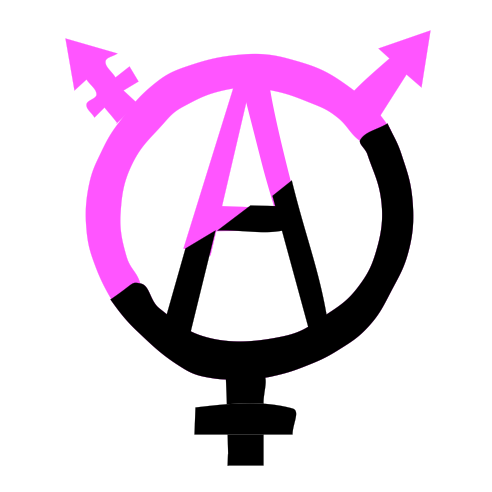 Queer anarchism advocates anarchism and social revolution as a means of queer liberation and abolition of homophobia, lesbophobia, transmisogyny, biphobia, transphobia, heteronormativity, heterosexism, patriarchy and the gender binary.
Queer anarchism advocates anarchism and social revolution as a means of queer liberation and abolition of homophobia, lesbophobia, transmisogyny, biphobia, transphobia, heteronormativity, heterosexism, patriarchy and the gender binary.
- Be Gay Do Crime - Mary Nardini Gang
- baedan - baedan
- Against the Gendered Nightmare - baedan
- For a Dialectic of Homosexuality and Revolution - David Berry
- Anarchist of Love - Hubert Kennedy
- The Gender Accelerationist Manifesto - Vikky Storm
- Queering Anarchism - C. B. Daring, J. Rogue, Deric Shannon & Abbey Volcano
- Queer Ultraviolence: BashBack! Anthology - Fray Baroque & Tegan Eanell
Agorism
 Agorism is a philosophy that advocates creating a society in which all relations between people are voluntary exchanges by means of counter-economics, thus engaging with aspects of peaceful revolution. The goal of agorism is the agora; the society of the open marketplace as near to untainted by theft, assault, and fraud as can be humanly attained is as close to a free society as can be achieved. And a free society is the only one in which each and every one of us can satisfy his or her subjective values without crushing others’ values by violence and coercion.
Agorism is a philosophy that advocates creating a society in which all relations between people are voluntary exchanges by means of counter-economics, thus engaging with aspects of peaceful revolution. The goal of agorism is the agora; the society of the open marketplace as near to untainted by theft, assault, and fraud as can be humanly attained is as close to a free society as can be achieved. And a free society is the only one in which each and every one of us can satisfy his or her subjective values without crushing others’ values by violence and coercion.
- The Last, Whole Introduction to Agorism - Samuel Edward Konkin
- An Agorist Primer - Samuel Edward Konkin
- New Libertarian Manifesto - Samuel Edward Konkin (Audiobook)
- Agorist Class Theory - Wally Conger (Audiobook)
Anarcho-Transhumanism
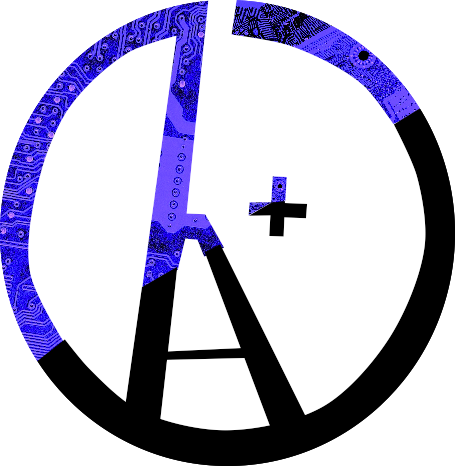 Anarcho-Transhumanism is the recognition that social liberty is inherently bound up with material liberty, and that freedom is ultimately a matter of expanding our capacity and opportunities to engage with the world around us. It is the realization that our resistance against those social forces that would subjugate and limit us is but part of a spectrum of efforts to expand human agency—to facilitate our inquiry and creativity.
Anarcho-Transhumanism is the recognition that social liberty is inherently bound up with material liberty, and that freedom is ultimately a matter of expanding our capacity and opportunities to engage with the world around us. It is the realization that our resistance against those social forces that would subjugate and limit us is but part of a spectrum of efforts to expand human agency—to facilitate our inquiry and creativity.
- What is Anarcho-Transhumanism? - William Gillis
- This Machine Kills Ability - Terra Brix
- A Cyborg Manifesto - Donna Harroway
- Science As Radicalism - William Gillis
- 15 Post-Primitivist Theses - William Gillis
Organizational Forms
Anarcho-Syndicalism
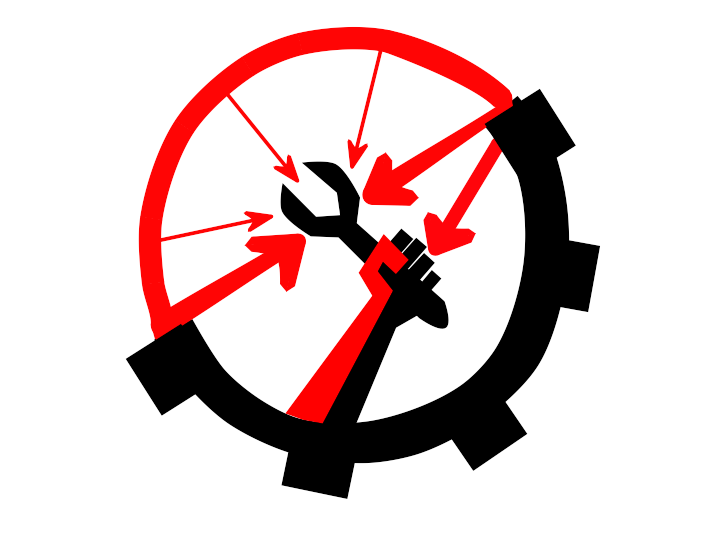 Anarcho-syndicalism is a theory of anarchism that views revolutionary industrial unionism or syndicalism as a method for workers in capitalist society to gain control of an economy and with that control influence in broader society. Syndicalists consider their economic theories a strategy for facilitating worker self-activity and as an alternative co-operative economic system with democratic values and production centered on meeting human needs.
Anarcho-syndicalism is a theory of anarchism that views revolutionary industrial unionism or syndicalism as a method for workers in capitalist society to gain control of an economy and with that control influence in broader society. Syndicalists consider their economic theories a strategy for facilitating worker self-activity and as an alternative co-operative economic system with democratic values and production centered on meeting human needs.
Works
- Anarcho-Syndicalism - Rudolf Rocker (Audiobook)
- Anarchism and Anarcho-Syndicalism - Rudolf Rocker
- Homage to Catalonia - George Orwell
- Fighting For Ourselves - Solidarity Federation
- Anarcho-Syndicalism in the 20th Century - Vadim Damier
- On Anarchism - Noam Chomsky
Organizations
- Argentina - Regional Workers' Federation
- Australia - Anarcho-Syndicalist Federation and Industrial Workers of the World
- Austria - Industrial Workers of the World and Viennese Workers Syndicate
- Bangladesh - Anarcho-Syndicalist Federation
- Belgium - Industrial Workers of the World
- Bulgaria - Autonomous Workers' Confederation
- Canada - Industrial Workers of the World
- Colombia - Libertarian Union of Students and Labour
- Croatia - Mreža anarhosindikalista
- Iceland - Industrial Workers of the World
- Italy - Syndicalist Union
- Indonesia - Persaudaraan Pekerja Anarko Sindikalis
- Ireland - Industrial Workers of the World
- Lithuania - Industrial Workers of the World
- Netherlands and Flanders - Free Union
- Nigeria - Awareness League
- Norway - Syndicalist League
- Poland - Workers' Initiative
- Portugal - International Association of Workers
- Romania - Anarcho-Syndicalist Initiative
- Serbia - Anarcho-Syndicalist Initiative
- Slovakia - Direct Action
- Switzerland - Industrial Workers of the World
- Turkey - Industrial Workers of the World
- United States - Industrial Workers of the World and Workers' Solidarity Alliance
Insurrectionary Anarchism
 Insurrectionary anarchism is a revolutionary theory, practice and tendency within the anarchist movement that emphasizes insurrection within anarchist practice. It is critical of formal organizations such as labor unions and federations that are based on a political programme and periodic congresses. Instead, insurrectionary anarchists advocate informal organization and small affinity group based organization. Insurrectionary anarchists put value in attack, permanent class conflict and a refusal to negotiate or compromise with class enemies.
Insurrectionary anarchism is a revolutionary theory, practice and tendency within the anarchist movement that emphasizes insurrection within anarchist practice. It is critical of formal organizations such as labor unions and federations that are based on a political programme and periodic congresses. Instead, insurrectionary anarchists advocate informal organization and small affinity group based organization. Insurrectionary anarchists put value in attack, permanent class conflict and a refusal to negotiate or compromise with class enemies.
- The End of Anarchism? - Luigi Galleani
- Let's Destroy Work, Let's Destroy the Economy - Alfredo M. Bonanno
- The Insurrectional Project - Alfredo M. Bonanno
- From Riot To Insurrection - Alfredo M. Bonanno (Audiobook)
- The Coming Insurrection - Invisible Committee (Audiobook)
- Insurrection vs Organization - Peter Gelderloos
- The Undesirables - Anonymous
Platformism
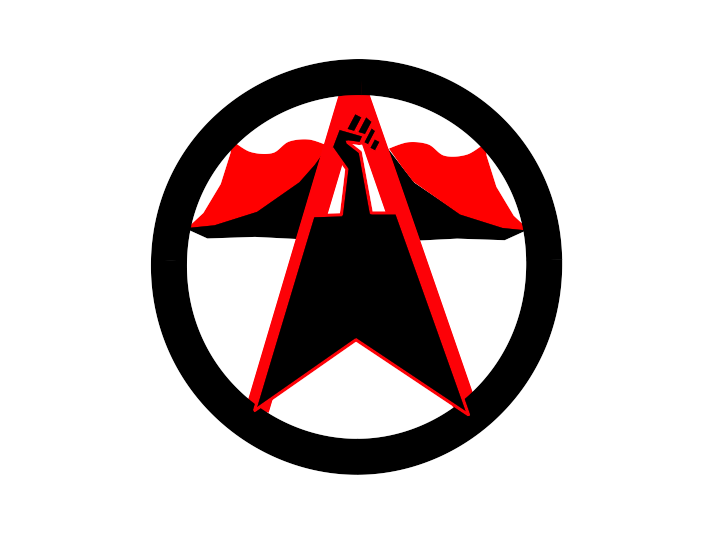 Platformism is a tendency that stresses the need for tightly organized anarchist organizations that are able to influence working class and peasant movements. “Platformist” groups reject the model of Leninist vanguardism. They instead aim to “make anarchist ideas the leading ideas within the class struggle”. According to platformists, the four main principles by which an anarchist organisation should operate, are ideological unity, tactical unity, collective responsibility and federalism.
Platformism is a tendency that stresses the need for tightly organized anarchist organizations that are able to influence working class and peasant movements. “Platformist” groups reject the model of Leninist vanguardism. They instead aim to “make anarchist ideas the leading ideas within the class struggle”. According to platformists, the four main principles by which an anarchist organisation should operate, are ideological unity, tactical unity, collective responsibility and federalism.
Works
- Organizational Platform of the General Union of Anarchists - Group of Russian Anarchists Abroad (Audiobook)
- About the Platform - Errico Malatesta and Nestor Makhno
- Social Anarchism and Organization - Anarchist Federation of Rio de Janeiro
- Towards a Fresh Revolution - Friends of Durruti (Audiobook)
- Manifesto of Libertarian Communism - Georges Fontenis
- Anarchist Organization not Leninist Vanguardism - Wayne Price
Organizations
- Aotearoa - Workers Solidarity Movement
- Argentina - Federación Anarco-Comunista de Argentina
- Australia - Melbourne Anarchist Communist Group
- Brazil - Anarchist Coordination
- Britain - Anarchist Communist Group
- France - Union of Libertarian Communists
- Greece - Anarchist Federation
- Ireland - Workers Solidarity Movement
- Norway - Motmakt
- Russia - Autonomous Action
- South Africa - Zabalaza Anarchist Communist Front
- Switzerland - Libertarian Action Winterthur and Organisation Socialiste Libertaire
- United States - Black Rose Anarchist Federation and Humboldt Grassroots
- Uruguay - Anarchist Federation
Synthesist Anarchism
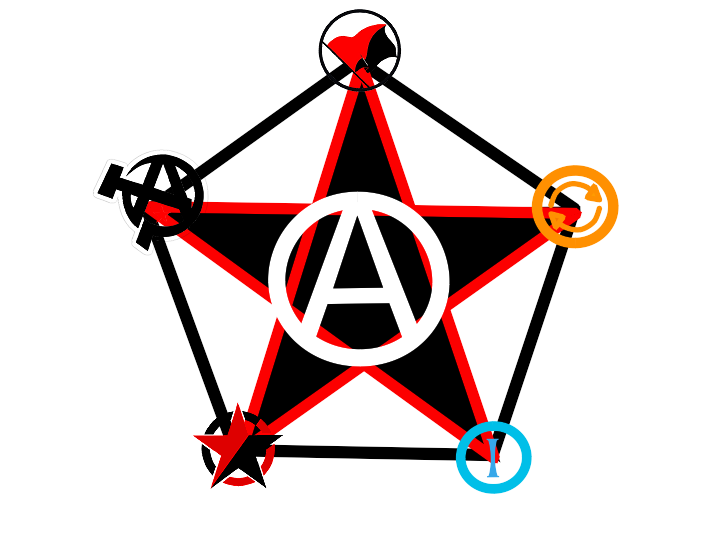 Synthesist anarchism is a form of anarchist organization which tries to join anarchists of different tendencies under the principles of anarchism without adjectives. It is the main principle behind the anarchist federations grouped around the contemporary global International of Anarchist Federations.
Synthesist anarchism is a form of anarchist organization which tries to join anarchists of different tendencies under the principles of anarchism without adjectives. It is the main principle behind the anarchist federations grouped around the contemporary global International of Anarchist Federations.
Works
- Anarchist Synthesis - Voline
- On Synthesis - Voline
- The Anarchist Synthesis - Sebastien Faure
- Anarchism - Voltairine de Cleyre
Organizations
- Argentina - Libertarian Federation
- Belarus - Anarchist Black Cross
- Brazil - Anarchist Federalist Initiative
- Britain - Anarchist Federation
- Bulgaria - Federation of Anarchists
- Central America and Caribbean - Anarchist Federation
- Czech Republic and Slovakia - Anarchist Federation
- France, Romandy and Wallonia - Anarchist Federation
- Germany and German-speaking Switzerland - Federation of Anarchists
- Greece - Anarchist Political Organization
- Iberia (Spain & Portugal) - Anarchist Federation
- Italy - Anarchist Federation
- Mexico - Federation of Anarchists
- North America (Canada, Mexico & USA) - Indigeneous Anarchist Federation
